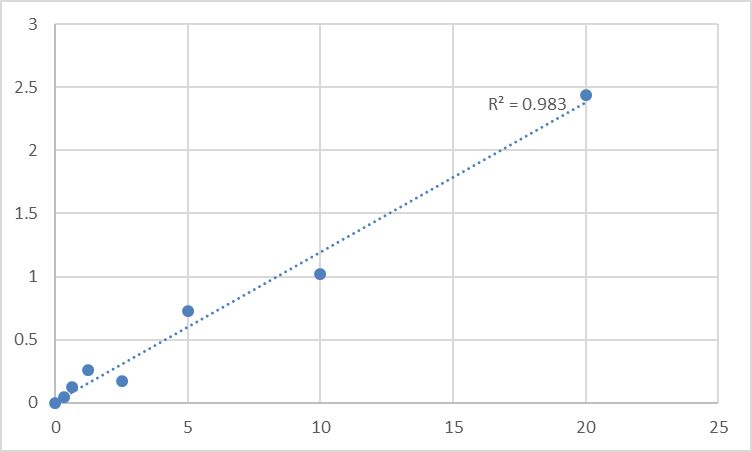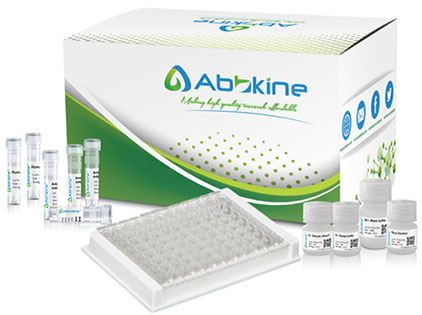| Product name | Mouse Thioredoxin-interacting protein (TXNIP) ELISA Kit |
| Reactivity | Mouse |
| Applications | ELISA |
| Applications notes | This Mouse Thioredoxin-interacting protein (TXNIP) ELISA Kit employs a two-site sandwich ELISA to quantitate TXNIP in samples. An antibody specific for TXNIP has been pre-coated onto a microplate. Standards and samples are pipetted into the wells and anyTXNIP present is bound by the immobilized antibody. After removing any unbound substances, a biotin-conjugated antibody specific for TXNIP is added to the wells. After washing, Streptavidin conjugated Horseradish Peroxidase (HRP) is added to the wells. Following a wash to remove any unbound avidin-enzyme reagent, a substrate solution is added to the wells and color develops in proportion to the amount of TXNIP bound in the initial step. The color development is stopped and the intensity of the color is measured. |
| Detection method | Colorimetric |
| SampleType | Cell culture supernatants, Other biological fluids, Plasma, Serum |
| Assay type | Sandwich ELISA (quantitative) |
| Assay duration | Multiple steps standard sandwich ELISA assay with a working time of 3-5 hours. It depends on the experience of the operation person. |
| Alternative | TXNIP; EST01027; HHCPA78; THIF; VDUP1; thioredoxin binding protein 2; upregulated by 1;25-dihydroxyvitamin D-3 |
| Kit components | • Mouse Thioredoxin-interacting protein microplate • Mouse Thioredoxin-interacting protein standard • Mouse Thioredoxin-interacting protein detect antibody • Streptavidin-HRP • Standard diluent • Assay buffer • HRP substrate • Stop solution • Wash buffer • Plate covers |
| Features & Benefits | Mouse Thioredoxin-interacting protein (TXNIP) ELISA Kit has high sensitivity and excellent specificity for detection of Mouse TXNIP. No significant cross-reactivity or interference between Mouse TXNIP and analogues was observed. |
| Calibration range | Please inquire |
| Limit of detection | Please inquire |
| Usage notes | • Do not mix components from different kit lots or use reagents beyond the kit expiration date. • Allow all reagents to warm to room temperature for at least 30 minutes before opening. • Pre-rinse the pipet tip with reagent, use fresh pipet tips for each sample, standard and reagent to avoid contamination. • Unused wells must be kept desiccated at 4 °C in the sealed bag provided. • Mix Thoroughly is very important for the result. It is recommended using low frequency oscillator or slight hand shaking every 10 minutes. • It is recommended that all samples and standards be assayed in duplicate or triplicate. |
| Storage instructions | The unopened kit should be stored at 2 - 8°C. After opening, please store refer to protocols. |
| Shipping | Gel pack with blue ice. |
| Precautions | The product listed herein is for research use only and is not intended for use in human or clinical diagnosis. Suggested applications of our products are not recommendations to use our products in violation of any patent or as a license. We cannot be responsible for patent infringements or other violations that may occur with the use of this product. |
| Background | Exposure to vitamin D3 (1,25-dihydroxyvitamin D3) or phorbol ester induces the bipotent HL-60 cell promyelocytic leukemia cell line to differentiate into monocytes/macrophages, whereas retinoic acid and dimethylsulfoxide induce differentiation towards granulocytes. The differentiation is accompanied by regulation of MYC , FOS , FMS (CSF1R), and myeloblastin (PRTN3;). By differential screening of HL60 cell lines, Chen and DeLuca (1994) identified a cDNA encoding TXNIP, which they termed VDUP1. The deduced TXNIP protein has 391 amino acids. Ribonuclease protection analysis showed dramatically increased expression of TXNIP in response to vitamin D3 but not to phorbol ester. Chen and DeLuca (1994) concluded that TXNIP is not involved in the differentiation process. |
| Gene ID | 56338 |
| Alternative | TXNIP; EST01027; HHCPA78; THIF; VDUP1; thioredoxin binding protein 2; upregulated by 1;25-dihydroxyvitamin D-3 |
| Accession | Q8BG60 |

Fig.1. Mouse Thioredoxin-interacting protein (TXNIP) Standard Curve.

Fig.2. Abbkine ELISA kit is series of sandwich ELISA to quantitate specific protein in samples.
You must be logged in to post a review.
Reviews
There are no reviews yet.